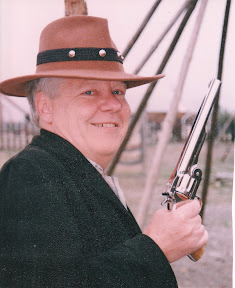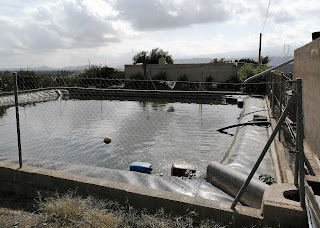When I think of my province – Almería – I don’t bring to mind flamenco dancers eating enormous plates of paella after an enjoyable afternoon at the bullfight explaining the minutiae of the spectacle to aghast tourists.
Hideous plastic farms aside (and I live completely surrounded by them), I’m gonna go along with the cowboys.
I learned my Spanish from going twice-weekly to the old pipa-theatre, the summer cinema open to the stars (late-showings only) and began with ‘hands up’ and rapidly progressed to ‘die, you dirty dog’ – useful on so many occasions, and especially now, with the Russian army due to arrive later this week on the twelve noon from Numa.
The old pipa-theatres were so called, because you ate a twist of sun-flower seeds noisily from your wobbly wooden chair, which could be picked up and turned around to make it easier to chat more comfortably with one’s neighbours during the slow boring bits.
Of course, with a good cowboy film, shot locally and with an Italian, German or Spanish director, there weren’t going to be many boring bits for sure.
Barbara my Californian wife would say, oh look, those aren’t American horses, those are PREs (which is horsey-folk slang for Spanish nags) as the rest of us wondered how a German director could get an Italian actor to say ‘Hands Up!’ in Spanish.
The gigantic speakers, plus the simple story line (Die, you dog!) made it easy to both follow the plot and also to pick up some vocab. Even today, I like my movies loud.
The movies were shot in Almería back in the golden years of regular visits to the cinema. The desert scenes of Tabernas were considered just the job for a good shoot-out and the extras came cheap enough. Sergio Leone and others like him managed to take an American original (we were all brought up on cowboys and Indians, stamped with the heavy American morals of the time) and improve upon it. Cut the chat, they figured correctly, and shoot somebody. Leone brought the camera close to the actor’s face and we could see the twitch in the eyes just before the guns blazed. The astonishing Ennio Moricone provided the music.
At 25 pesetas for a cracking good evening, with a beer or a soft drink for another ten, hold the pipas, it was blissful.
Tabernas today, a half century on, has several cowboy towns – or film-sets – open to the public. The largest is the Mini Hollywood now called Oasys with a museum, film posters of Anthony Steffen, Giuliano Gemma, Bud Spencer, Terence Hill (all Italians), Clint Eastwood, Lee van Cleef, Dan van Husen (who came to my 21st birthday party in Mojácar), Klaus Kinski and so many more. There’s a collection of old film-projectors, a zoo (for some reason), a bar with lots of character actors wandering around shooting each other as we complacently drink a beer and many other attractions besides.
They even lend you a c owboy
hat and a revolver and take a picture of you looking either mean or
else bemused (or in my case, mildly sun-stroked and drunk).
owboy
hat and a revolver and take a picture of you looking either mean or
else bemused (or in my case, mildly sun-stroked and drunk).
By the mid-seventies, the film-makers had moved on, as the local agents got increasingly greedy, and they began to make cowboy flicks in Yugoslavia or Morocco (‘Huh, that’s an Arab horse’ says Barbara derisively).
Nowadays, Tabernas gets a few adverts shot there and maybe a Spanish director will make a rare cowboy film (Pedro Almodóvar is filming one at present), and my old mate Eduardo, who has made his career by getting shot and dramatically falling off a galloping horse, will likely make a brief appearance in the second reel.
...
The history of the Spanish cowboy films at Valencia Plaza here explains how the local industry fell to pieces.

